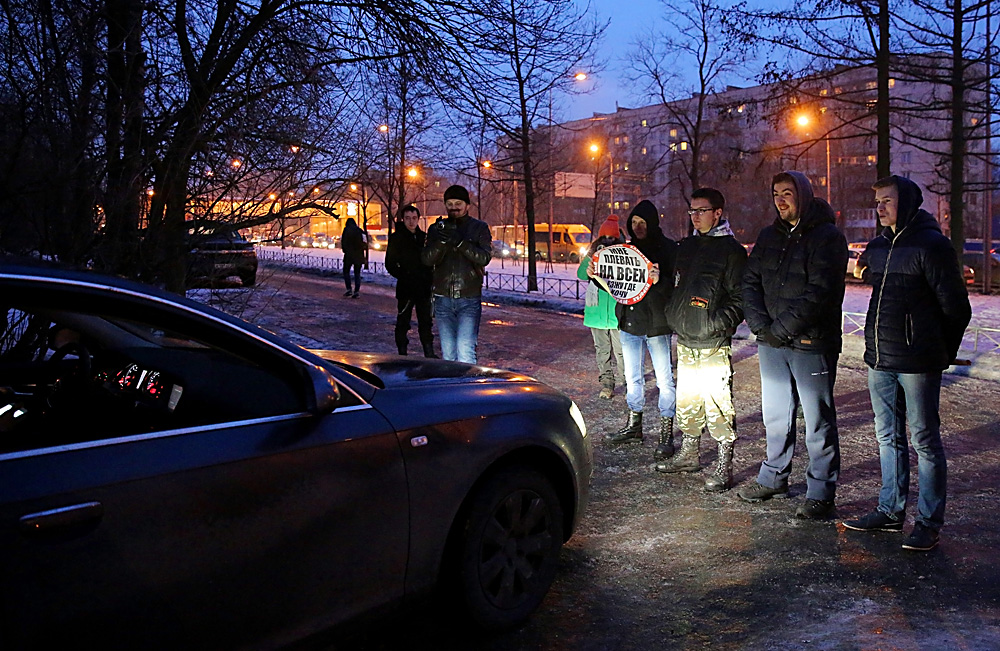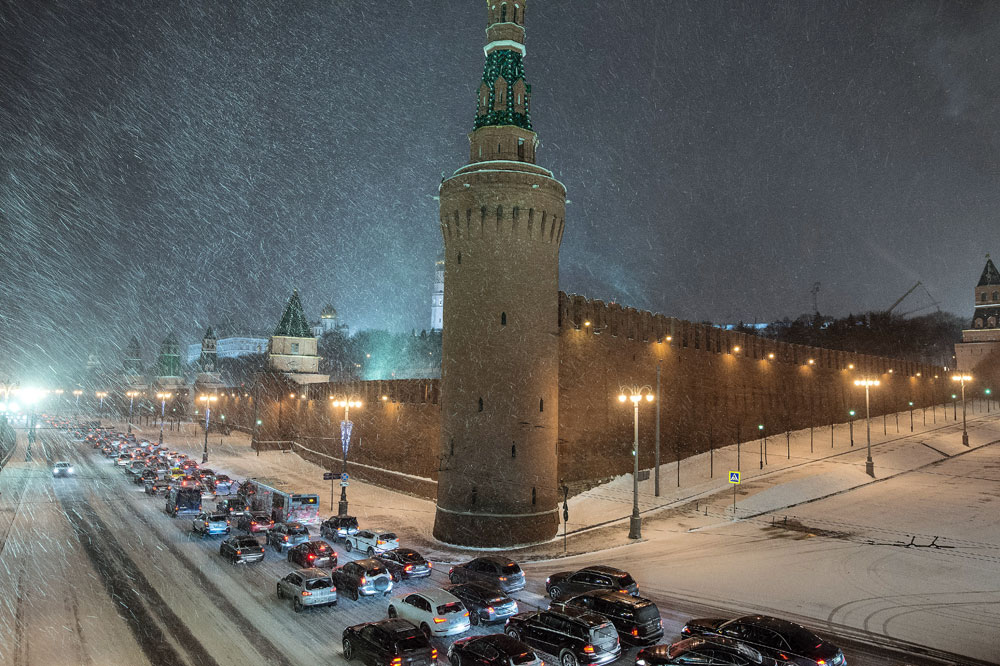StopHam: The end of the road for Russia’s parking vigilantes?

"I don't care about anyone, I park wherever I want."
PhotoXPressIt is a weekday evening. There is a traffic jam on a small street in the center of Moscow. The reason: A white Mercedes is standing in the middle of the street in front of a restaurant with its hazard lights on.
Finally the owner of the car, a young woman, comes out and approaches her car. On the windshield there is an enormous circular sticker reading "I don't care about anyone, I park wherever I want."
"What's this?" says the woman angrily, ripping off the sticker.
She is approached by a group of young people from the StopHam activist movement. One of them explains:
"Because of you there's a traffic jam. We've taken measures."
After a 15-minute argument, which the activists record on video, the woman drives off. This time there was no fistfight. But often furious drivers break the camera and hit the activists.
However, ordinary citizens are not the main target of StopHam, whose name is based on the Russian word for “boor,” ham.
 An activist of the StopHam movement, Vladivostok. Source: Vitaly Ankov/RIA Novosti
An activist of the StopHam movement, Vladivostok. Source: Vitaly Ankov/RIA Novosti
The activists are accompanied by a video crew and all offenses are recorded on camera. The most scandalous videos are then posted on the movement's YouTube channel, where they receive a lot of public attention.
The movement was born as a fight against the arbitrariness of high-ranking officials or the well-to-do part of Russian society, which behaved as the highest caste without respect for parking and traffic regulations.
Usually the police would not react to such violations and ordinary citizens were unhappy about such lawless situations. The StopHam public movement was effective in at least voicing its dissatisfaction and creating various kinds of difficulties for drivers who considered themselves above the law.
But on March 30 the Moscow City Court announced the liquidation of the movement. The court's press office said that in accordance with a demand from the Justice Ministry, the court had decided to liquidate the movement back in October.
In the five years that StopHam has existed the situation on Russian roads has changed significantly and the government has started doing its job better. Parking rules have been made stricter and the police have finally begun carrying out their functions.
Every day in Moscow (but also in other cities) hundreds of incorrectly parked cars are ticketed and towed to special parking lots where the offender also has to pay to get his car back (together the fine and the special parking cost $120). The green tow trucks that remove cars from the streets already have a nickname: “vultures.”
These days, drivers are more afraid of the green “vultures” than of StopHam, which is why the news about StopHam's exclusion from the list of government-subsidized organizations may well mean that the authorities see its mission as having been accomplished.
The war against antisocial parking
"We carry out raids in Moscow every day," said StopHam director Dmitry Chugunov, explaining how the organization worked. "Usually we have 2-3 raids a day, but sometimes more."
The movement has its own network, covering between 30 and 50 Russian cities.
"People from various cities turn to us. They say they want to open a StopHam branch. We are happy to help them," said Chugunov.
 Activists of the StopHam movement, St. Petersburg. Source: TASS
Activists of the StopHam movement, St. Petersburg. Source: TASS
Yuri Geiko, editor-in-chief of the Avtolikbez car magazine, approves highly of StopHam's activity.
"This is a correct movement. They do a lot of good. This says that elements of a civil society are sprouting in our country," said Geiko.
Chugunov is of the same opinion, and believes that the movement has achieved an important result: "Our project is gradually beginning to change the way people think," he said.
StopHam vs. the Main Directorate for Road Traffic Safety
Nevertheless, StopHam has numerous critics, who believe that the movement exists thanks to "protection above" and for "self-promotion," for which the activists vigorously use YouTube resources.
It is also public knowledge that StopHam receives a large portion of its financing from the government in the form of presidential grants. In 2013 four million rubles ($129,000) was allotted to the project, in 2014 – six million rubles ($181,000) and in 2015 eight million rubles ($120,000).
YouTube also brings in some revenue. The SocialBlade revenue estimator calculated that the activists can earn $192,000 a year on their channel.
Representatives of Russia’s Main Directorate for Road Traffic Safety (GIBDD) do not have a particularly high opinion of the activities of the movement.
"We do not recognize the StopHam organization, they just get in the way," said Andrei Chervochkin, head of the GIBDD branch in the Republic of Karelia, north of St. Petersburg.
"The most important thing for them is to make a video and show up the person. Yes, he violated the law and must be punished, but we have the judiciary and the rule of law. No one can judge him, neither I nor anyone else."
Several years ago the most vehement opponents of StopHam even created their own public movement called StopStopHam, which called for "ending the wrongful actions" of the StopHam activists.
All rights reserved by Rossiyskaya Gazeta.
Subscribe
to our newsletter!
Get the week's best stories straight to your inbox

